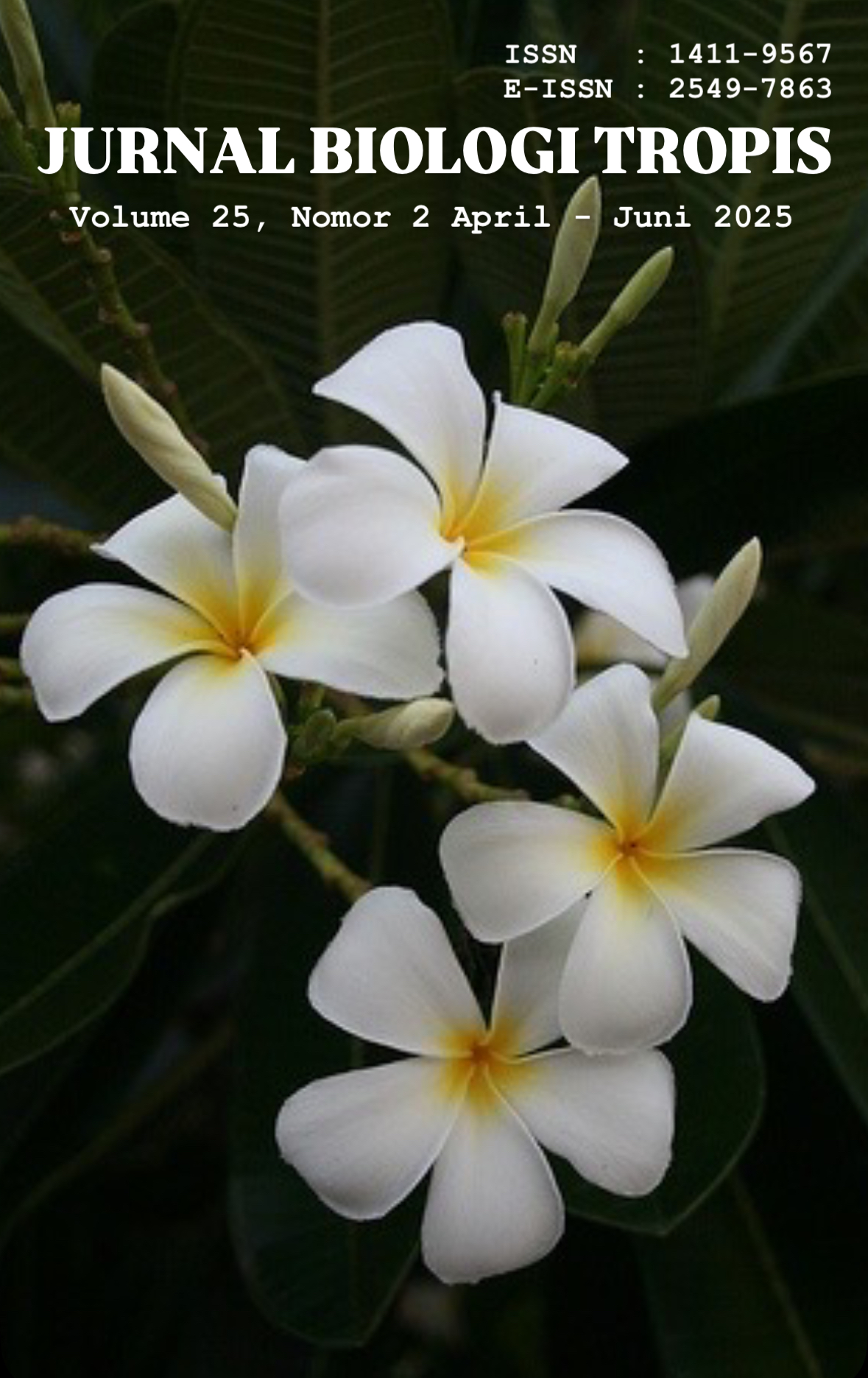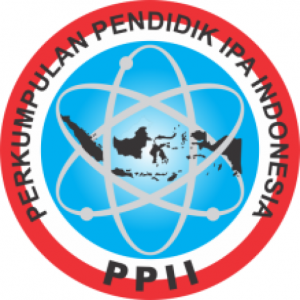Mapping Urban Green Space Fragmentation using Drone Technology in Banjarbaru City
Authors
Akhmad Rizali , Saipul Abbas , Yusriadi Marsuni , Yulia Padma Sari , Nurin Nisa Farah , Noorkomalasari Noorkomalasari , Badaruddin BadaruddinDOI:
10.29303/jbt.v25i2.8920Published:
2025-05-21Issue:
Vol. 25 No. 2 (2025): April-JuniKeywords:
Banjarbaru City, drone, fragmentation, green space, spatial planning (RTRW).Articles
Downloads
How to Cite
Downloads
Metrics
Abstract
The rapid urban growth in Banjarbaru City has significantly impacted the quality and quantity of green open spaces. Fragmentation of green spaces poses a major challenge in maintaining the city's ecological balance, particularly amidst high urbanization rates. This study aims to analyze the distribution and fragmentation level of green spaces across five sub-districts in Banjarbaru City using drone technology and spatial approaches. Data were collected through high-resolution aerial mapping and spatially analyzed to identify fragmentation patterns and compare them with the 2024-2043 Spatial Planning (RTRW) of Banjarbaru City. The results show that the highest fragmentation occurs in the Landasan Ulin and South Banjarbaru sub-districts, characterized by small patches and low core vegetation areas. Meanwhile, North Banjarbaru, Cempaka, and Liang Anggang sub-districts still retain extensive and connected green spaces. A comparison with the RTRW reveals a deviation between the planned and actual conditions, particularly in areas designated to be preserved as green open spaces.
References
Albaroza, I., Salahudin, S., & Taqwa, I. (2021). Pengembangan tata kelolah ruang terbuka hijau: Sebuah kajian pustaka terstruktur. Sang Pencerah: Jurnal Ilmiah Universitas Muhammadiyah Buton, 7(4), 679–694. https://doi.org/10.35326/pencerah.v7i4.1144
Adharina, N., & Aulia, T. (2022). Identifikasi jejaring ekologi ruang terbuka hijau Kota Bandung. Tata Kota dan Daerah, 14(2). https://doi.org/10.21776/ub.takoda.2022.014.02.7
Ambarwati, W., & Johan, Y. (2016). Sejarah dan perkembangan ilmu pemetaan. Jurnal Enggano, 1(2), 80–82. https://doi.org/10.31186/jenggano.1.2.80-82
Angestiwi, T., & Wahyuniati, F. (2022). Analisis kualitas ruang terbuka hijau Taman Monumen Perjuangan Rakyat Jawa Barat. Jurnal Kajian Ruang, 2(2), 193. https://doi.org/10.30659/jkr.v2i2.26530
Caesarina, H., & Rahmani, D. (2019). Penyediaan ruang terbuka hijau dengan pendekatan kota hijau pada perkotaan Martapura. Jurnal Planoearth, 4(1), 11. https://doi.org/10.31764/jpe.v4i1.712
Cameron, R., Blanuša, T., Taylor, J., Salisbury, A., Halstead, A., Henricot, B., & Thompson, K. (2012). The domestic garden – its contribution to urban green infrastructure. Urban Forestry & Urban Greening, 11(2), 129–137. https://doi.org/10.1016/j.ufug.2012.01.002
Chu, M., Lu, J., & Sun, D. (2022). Influence of urban agglomeration expansion on fragmentation of green space: A case study of Beijing-Tianjin-Hebei urban agglomeration. Land, 11(2), 275. https://doi.org/10.3390/land11020275
Falah, M. (2019). Keletakan ruang terbuka hijau dalam tata ruang Kota Bandung akhir abad XIX hingga pertengahan abad XX. Sosiohumaniora, 21(2). https://doi.org/10.24198/sosiohumaniora.v21i2.21020
Firmansyah, F., Jatayu, A., & Imaduddin, B. (2024). Spatial transformation analysis in Menganti Subdistrict: A study of peri-urban area typologies in the face of urban expansion. IOP Conference Series: Earth and Environmental Science, 1353(1), 012039. https://doi.org/10.1088/1755-1315/1353/1/012039
Gallo, T., Fidino, M., Lehrer, E., & Magle, S. (2017). Mammal diversity and metacommunity dynamics in urban green spaces: Implications for urban wildlife conservation. Ecological Applications, 27(8), 2330–2341. https://doi.org/10.1002/eap.1611
Hayati, J., Sitorus, S., & Nurisjah, S. (2013). Pengembangan ruang terbuka hijau dengan pendekatan kota hijau di Kota Kandangan. Jurnal Tataloka, 15(4), 306. https://doi.org/10.14710/tataloka.15.4.306-316
Jabbar, M., Yusoff, M., & Shafie, A. (2021). Assessing the role of urban green spaces for human well-being: A systematic review. GeoJournal, 87(5), 4405–4423. https://doi.org/10.1007/s10708-021-10474-7
Kinfu, E., Bombeck, H., Nigussie, A., & Wegayehu, F. (2018). The genesis of peri-urban Ethiopia: The case of Hawassa City. Journal of Land and Rural Studies, 7(1), 71–95. https://doi.org/10.1177/2321024918808125
Kirichenko-Babko, M., Łagód, G., Majerek, D., Franus, M., & Babko, R. (2017). The effect of landscape on the diversity in urban green areas. Ecological Chemistry and Engineering S, 24(4), 613–625. https://doi.org/10.1515/eces-2017-0040
Lee, A., Jordan, H., & Horsley, J. (2015). Value of urban green spaces in promoting healthy living and wellbeing: Prospects for planning. Risk Management and Healthcare Policy, 131. https://doi.org/10.2147/rmhp.s61654
Li, H., Chen, W., & He, W. (2015). Planning of green space ecological network in urban areas: An example of Nanchang, China. International Journal of Environmental Research and Public Health, 12(10), 12889–12904. https://doi.org/10.3390/ijerph121012889
McManamay, R., Vernon, C., Chen, M., Thompson, I., Khan, Z., & Narayan, K. (2024). Dynamic urban land extensification is projected to lead to imbalances in the global land-carbon equilibrium. Communications Earth & Environment, 5(1). https://doi.org/10.1038/s43247-024-01231-y
Messaoud, K., Wang, Y., Jiang, P., Ma, Z., Hou, K., & Dai, F. (2024). Spatial-temporal dynamics of urban green spaces in response to rapid urbanization and urban expansion in Tunis between 2000 and 2020. Land, 13(1), 98. https://doi.org/10.3390/land13010098
Namwinbown, T., Imoro, Z., Weobong, C., Tom-Dery, D., Baatuuwie, B., Aikins, T., & Lawer, E. (2023). Past and future landscape dynamics reveal green space decline and fragmentation in a rapidly expanding city of Northern Ghana, West Africa. https://doi.org/10.21203/rs.3.rs-2925090/v1
Peixi, X. (2023). Study on spatial layout and environmental equity of urban green space in Nanning City based on GIS. E3S Web of Conferences, 393, 01035. https://doi.org/10.1051/e3sconf/202339301035
Pemerintah Kota Banjarbaru. (2024). Peraturan Daerah Kota Banjarbaru Nomor 4 Tahun 2024 tentang Rencana Tata Ruang Wilayah (RTRW) Kota Banjarbaru Tahun 2024–2043. Pemerintah Kota Banjarbaru.
Prianto, A. (2017). Kebijakan pengelolaan ruang terbuka hijau di Kota Makassar. https://doi.org/10.31227/osf.io/87tdn
Putri, K., Ridlo, M., & Widyasamratri, H. (2023). Studi literatur: Strategi penanganan permukiman kumuh di perkotaan. Jurnal Kajian Ruang, 3(1), 104. https://doi.org/10.30659/jkr.v3i1.22909
Qian, Y., Zhou, W., Li, W., & Han, L. (2015). Understanding the dynamic of greenspace in the urbanized area of Beijing based on high resolution satellite images. Urban Forestry & Urban Greening, 14(1), 39–47. https://doi.org/10.1016/j.ufug.2014.11.006
Ramadhani, W., Mustakim, M., & Muis, A. (2023). Analisis ketersediaan lahan terbuka hijau bagi pertumbuhan penduduk di Kecamatan Tempe Kab. Wajo menggunakan aplikasi sistem informasi geografis (SIG). Karajata, 3(1), 64–71. https://doi.org/10.31850/karajata.v3i1.2066
Salvati, L., Tombolini, I., Ippolito, A., & Carlucci, M. (2016). Land quality and the city: Monitoring urban growth and land take in 76 Southern European metropolitan areas. Environment and Planning B: Urban Analytics and City Science, 45(4), 691–712. https://doi.org/10.1177/0265813516684827
Sari, I. (2019). Ruang terbuka hijau di perkotaan. https://doi.org/10.31227/osf.io/a6ek9
Setyati, R., & Utomo, W. (2015). Implementasi kebijakan penataan ruang terbuka hijau kawasan perumahan Kota Banjarbaru. JKAP (Jurnal Kebijakan dan Administrasi Publik), 19(1), 59. https://doi.org/10.22146/jkap.7534
Suciani, A., & Rahmadi, M. (2019). Pemanfaatan drone DJI Phantom 4 untuk identifikasi batas administrasi wilayah. Jurnal Geografi, 11(2), 218–223. https://doi.org/10.24114/jg.v11i2.10604
You, H. (2015). Quantifying urban fragmentation under economic transition in Shanghai City, China. Sustainability, 8(1), 21. https://doi.org/10.3390/su8010021
Zhou, X., & Wang, Y. (2011). Spatial–temporal dynamics of urban green space in response to rapid urbanization and greening policies. Landscape and Urban Planning, 100(3), 268–277. https://doi.org/10.1016/j.landurbplan.2010.12.013
Zhou, G., Zhang, J., Li, C., & Liu, Y. (2022). Spatial pattern of functional urban land conversion and expansion under rapid urbanization: A case study of Changchun, China. Land, 11(1), 119. https://doi.org/10.3390/land11010119
Author Biographies
Akhmad Rizali, Universitas Lambung Mangkurat
Yusriadi Marsuni, Universitas Lambung Mangkurat
License
Copyright (c) 2025 Akhmad Rizali, Saipul Abbas, Yusriadi Marsuni, Yulia Padma Sari, Nurin Nisa Farah, Noorkomalasari Noorkomalasari, Badaruddin Badaruddin

This work is licensed under a Creative Commons Attribution 4.0 International License.

Jurnal Biologi Tropis is licensed under a Creative Commons Attribution 4.0 International License.
The copyright of the received article shall be assigned to the author as the owner of the paper. The intended copyright includes the right to publish the article in various forms (including reprints). The journal maintains the publishing rights to the published articles.
Authors are permitted to disseminate published articles by sharing the link/DOI of the article at the journal. Authors are allowed to use their articles for any legal purposes deemed necessary without written permission from the journal with an acknowledgment of initial publication to this journal.


























